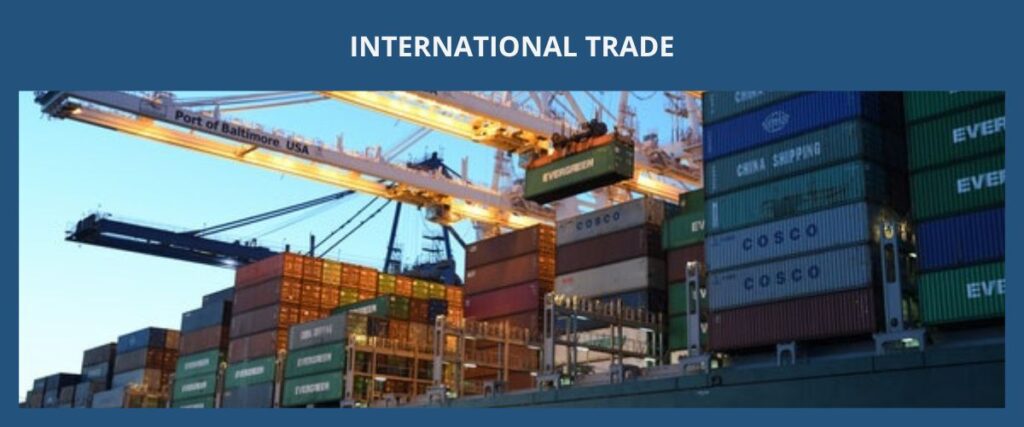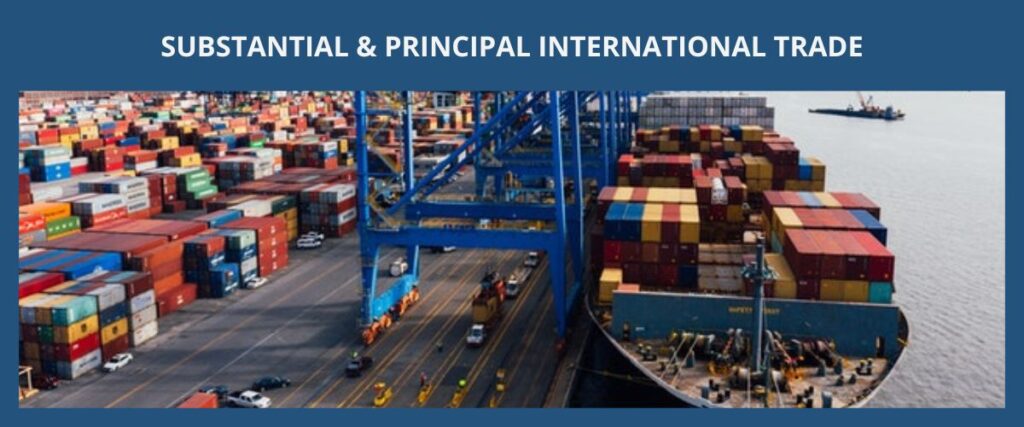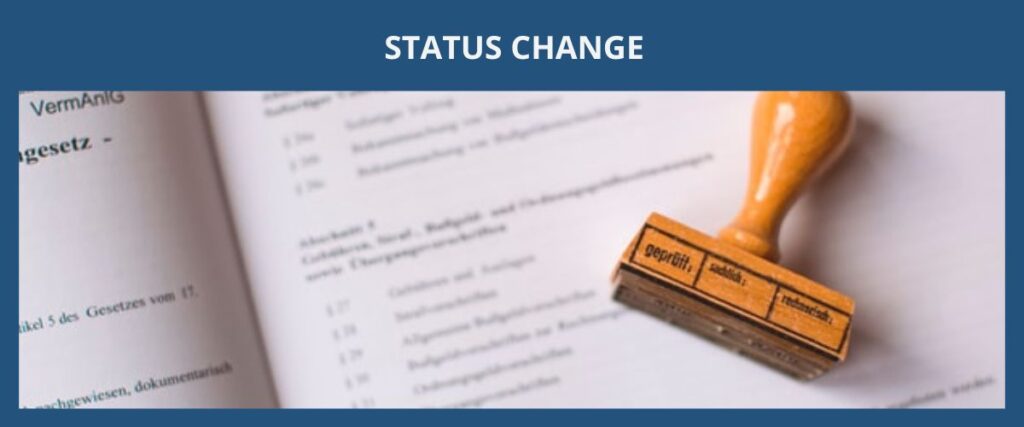The E1 visa is a nonimmigrant (temporary) visa for foreign business owners (from certain treaty countries) who are coming to the United States to manage their existing business operation that mostly involves international trades between the United States and the treaty country that they are from.
The business owner can also bring their foreign employees (who must be from the same treaty country as them) to the United States under the E1 visa to help run their business operations in the United States. The employees of the E1 visa business owner can include executives, supervisors, or staff with special skills that are essential to successfully running the business operations efficiently in the United States. Employees can be new hires under the E1 visa which means that they do not need to have worked for the business owner in the past.
- 1.
- 2.
- 3.
- 4.
- 5.
- a.
- b.
- 6.
- 7.
- 8.
- 9.
- a.
- b.
- c.
Table of Contents
A qualified person under the E1 visa treaty trader application must be (1) a business owner doing substantial and principal international trade in goods, services, or technology between their country of citizenship (or nationality) and the United States, (2) their business must have numerous sizable transactions throughout a period of time (or have binding contracts that show immediate international trade), and (3) over 50% of the total volume of their business’s international trade must be between the United States and the treaty country that they are from.
The treaty trader can also bring their foreign employees (i.e., executives, supervisors, or essential staff) to the United States to assist them in running the business operations under the E1 visa. Please see here for qualified employees of E1 visa treaty traders.
The original statutory wording for qualified persons for E1 visas can be found in 8 CFR 214.2(e)(1).
Nationality or Citizenship of Treaty Country
The E1 visa business owner (or the business) must have the nationality or citizenship of a foreign country that has a qualified treaty with the United States (or the country is approved under U.S. legislation).
E1 Visa (Treaty Trader) | |
Asia | North America |
· Republic of China (Taiwan) · Japan · South Korea · Philippines · Singapore · Thailand · Brunei | · Canada · Mexico |
South America | Central America |
· Argentina · Bolivia · Chile · Colombia · Paraguay · Suriname | · Costa Rica · Honduras |
Africa | Oceania |
· Ethiopia · Liberia · Togo | · Australia (available for E3 visa as well) · New Zealand |
Middle East | Caribbean |
· Israel · Jordan · Oman · Pakistan · Turkey | · None |
Europe | |
· Austria · Belgium · Bosnia and Herzegovina · Croatia · Denmark · Estonia · Finland · France · Germany · Greece · Ireland · Italy · Latvia · Luxembourg | · Macedonia · Netherlands · Norway · Poland · Serbia · Slovenia · Spain · Sweden · Switzerland · United Kingdom · Kosovo · Montenegro · Yugoslavia |
E1 Visa Business Owner With Dual Citizenship
Business owners who have dual citizenship (not including U.S. citizenship) can choose one of the countries (if it is a qualified treaty country) to use for the E1 visa. If the business owner with dual citizenship has already entered the United States, then the country of the passport they used to enter would be the country used under the E1 visa.
E1 Visa Business Owner Cannot be U.S. Citizen or U.S. Green Card Holder
Business owners who have a green card or have a U.S. citizenship (dual citizenship) will not be treated as a foreign treaty trader for the treaty country ownership qualifications under the E1 visa because they cannot actually hold an E1 visa status.
E1 Visa Business Owner is a Legal Entity
When the business owner (treaty trader) under the E1 visa is an organization or enterprise (business entity), the nationality of the organization or enterprise is traced back to the nationality of its individual owners (persons). The organization or enterprise that is acting as a business owner (treaty trader) must be at least 50% owned by persons who have a valid E1 visa status (or who are qualifiable for an E1 visa status if they are outside the United States) and the organization or enterprise will be given the nationality of those business owner’s treaty country.
In scenarios where two owners from different treaty countries have equal shares in a partnership or a 50/50 joint venture, the nationality of the organization or enterprise can be either owner’s treaty country. The nationality of publicly traded companies is usually presumed to be of the country where the stock is physically listed and the stock exchange that it is exclusively sold and traded on.

International Trade
The E1 visa business owner’s existing business must have been involved in international trade (traceable exchanges in goods or services) between the United States and the treaty country that they are from. A business that only does business in a domestic market will not be qualified under an E1 visa.
The title of the items of trade under the E1 visa must pass from one treaty country to another treaty country. Typically, the title of the items traded will be given the same nationality as the business owner who held the title of the items and not be given the nationality of the country where the items were originally manufactured (can be a third non-treaty country). For example, a UK citizen holding the title of the items traded (the items were originally manufactured in Vietnam) to a U.S. corporation would likely be qualified as international trade under the E1 visa.
Trade Items
The items under the international trade in the E1 visa are mainly goods or services. Goods are defined as tangible commodities or merchandise that have extrinsic value. Services are defined as legitimate economic activities that are not tangible goods (which means intangible property should be qualified as a service).
Some examples of what the items of trade under the E1 visa are:
- Goods
- Services
- Technology
- Tourism
- Advertising
- Accounting
- Design and engineering
- Management consulting
- Data processing
- Monies
- International banking
- Insurance
- Transportation
- Communications
- Certain news-gathering activities
The list above is not exhaustive and any item that is commonly traded in international commerce should qualify as an item of trade under the E1 visa.

Substantial Trade
Substantial trade under the E1 visa must be a continuous flow of items being traded internationally between the United States and the treaty country which means that a single trade cannot qualify even if it was a big sale. The number of transactions and the monetary value of each transaction will also be factors in determining whether the business has been engaged in substantial trade under the E1 visa standard. The amount of income the business makes should be at least enough to cover the living costs of the E1 visa business owner and their family.
Principal Trade
The business owner’s international trade under the E1 visa must be principally (over 50%) between the United States and the treaty country. In other words, the amount of international trade between the United States and the treaty country must be more than 50% of the total amount of international trade done by the business under the E1 visa.
Generally, any U.S. domestic trades should not be counted towards the percentage of the international trade between the United States and the treaty country. Domestic trades within the foreign treaty country should be excluded from the calculation of the total international trade of the business. For example, a business that does 80% of its business domestically in Taiwan and 20% is in international trade, the business owner should be able to qualify under the E1 visa if at least 50% of that 20% international trade is done between the United States and Taiwan.

In most cases, the E1 visa status can be granted an initial period of stay up to 2 years (the E1 visa itself may be granted up to 5 years depending on the reciprocal country) and the renewal (extensions of stay) can be granted for up to an additional 2 years each time. There is no maximum limit on how many times the E1 visa can be renewed and an automatic two-year period of readmission is generally granted when the E1 visa holder returns to the United States after traveling overseas. The automatic 2-year renewals do not apply to the family members of the E1 visa holder unless they were returning to the United States with the principal E1 visa holder (i.e., the E1 visa treaty trader).
*The period of stay that can be granted for the E1 visa varies among different treaty countries. For example, Canadians can be granted a period of stay for up to 2 years whereas Mexicans can only be granted a period of stay for up to 1 year.
E1 visa Grace Period
The E1 visa business owner (treaty trader) is allowed to enter the United States 10 days before the start date and stay an additional 10 days after the end date. However, no work can be done in those additional 20 days. There is also a 60-day grace period of authorized stay in the United States if the business owner’s E1 visa is terminated earlier than their visa status end date. Working is also not allowed during the 60-day grace period since its purpose is for the person to look for other employment or wrap up their affairs in the United States.
-eng-1024x427.jpg)
The E1 visa has three main requirements that need to be satisfied: evidence must be provided to the USCIS or DOS to show that (1) the business owner has the nationality or citizenship of a country that has a qualified E1 visa treaty with the United States (or the foreign country is approved under U.S. legislation), (2) their business must have been doing business that includes numerous sizable transactions throughout a period of time (or have binding contracts that show immediate international trade), and (3) over 50% of the total volume of their business’s international trade must be between the United States and their treaty country.
Documents Required for the E1 Visa (International Treaty Trader)
The evidence provided to the USCIS or DOS for the E1 visa (Treaty Trader) must show:
- (A)
- The person is a national or citizen of a country that has a qualified treaty with the United States (or the country is approved under U.S. legislation)
The E1 visa application requires the treaty trader (business owner or business entity) to have the nationality or citizenship of a foreign country that has an E1 visa qualified treaty with the United States (or the country is approved under U.S. legislation).
The nationality of the organization or enterprise (business entity) acting as a business owner (treaty trader) under the E1 visa is traced back to the nationality of its individual owners (persons) and at least 50% of the ownership must be from persons who have a valid E1 visa status (or who are qualifiable for an E1 visa status if they are outside the United States). The nationality of publicly traded companies is usually presumed to be of the country where the stock is physically listed and the stock exchange that it is exclusively sold and traded on.
Documents to Prepare (Qualified E1 Visa Nationality)
Evidence that shows the E1 visa business owner has a nationality or citizenship of a qualified treaty country under an E1 visa can include but are not limited to:
- Passport is issued by a qualified treaty country (it should include biographical pages, related visa pages and stamps that show U.S. admission)
- Arrival-Departure Record (Form I-94)
Evidence that shows the E1 visa enterprise or organization has a nationality of a qualified treaty country under an E1 visa can include but are not limited to:
- Capitalization table of the treaty enterprise, or detailed list of the owners (it should include their citizenship or nationality, type of ownership, ownership percentages)
- Most recent annual report (it should include all subsidiaries, affiliates, branch office, ownership percentage based on owner’s nationality or citizenship)
- Most recent Securities and Exchange Commission Form 10-k (it should show the subsidiaries and ownership percentage of the treaty enterprise)
- Most recent meeting minutes of the treaty enterprise (it should list the equity holders, and the type, amount, and percentage they own)
- Equity certificates of the treaty enterprise (it should show the name of each equity holder and the type owned)
- Equity ledger of treaty enterprise (it should show all certificated and uncertificated equity issued, total amount, type of equity, all equity holder names)
- [Corporations] Bylaws, articles of incorporation, certificates of designation of the treaty enterprise, and all amendments of treaty enterprise (it should include type and amount of stock authorized to be issued, receipt date stamped by state official)
- [LLC] Operating agreement, articles of organization, and all amendments, attachments, addendums, additional statements, exhibits of treaty enterprise (it should include member names, type and percentage of membership interests, receipt date stamped by state official)
- [Partnerships] Partnership agreement, registration documents, and all amendments, attachments, additional statements, exhibits of treaty enterprise (it should include partner names, type and percentage of partnership interests, extent of partner’s liabilities, receipt date stamped by state official)
- [Sole Proprietorships] Sole proprietorship registration documents of treaty enterprise (it should identify the person operating the sole proprietorship, the person’s nationality or citizenship, receipt date stamped by state official)
- [Franchise] Franchise agreement of treaty enterprise, and all amendments, attachments, additional statements, exhibits (it should show the nationality or citizenship of treaty trader)
- Documents that show the treaty enterprise has been authorized to operate as a branch office in the state

- (B)
- The person must be doing substantial and principal international trade
The E1 visa requires the business to have substantial and principal international trade. Substantial trade under the E1 visa is a sufficient amount and continuous flow (numerous transactions over time) of international exchange in goods, services, and/or technology between the treaty country and the United States. The number of transactions that have happened over a period of time is more important than the amount or size of the transactions. For example, a business with one big sale ($1M) over a period of 2 months will be less favorable than a business that has moderate sales ($100k) each month over a period of 2 years.
Principal trade under the E1 visa is where over 50% of the total volume of the business’s international trade is between the United States and the treaty country. For example, a qualified E1 visa business may be a business that consists of 80% of domestic business in Taiwan and 20% of business in international trade with at least 50% of that 20% international trade done between the United States and Taiwan.
Documents to Prepare (Substantial and Principal Trade)
Evidence that shows the E1 visa business owner is doing substantial and principal international trade can include but are not limited to:
- Federal income tax returns of the person
- Federal income tax returns of the business
- Financial statements of the business (it should include balance sheets, statements of income and expenses, bank statements)
- U.S. Customs and Border Protection Forms, Entry Summary and Customs Bond (it should show the business’s activity)
- Shipper’s Export Declaration and Shipper’s Export Declaration for In-Transit Goods, documents that show electronic filing of export data through the Automated Export System (e.g., Electronic Export Information EEI)
- Contracts that show purchases or sales (with foreign suppliers or clients of the business)
- Sales invoices
- Itemized list of inventories in the United States
- Documents that show the cost of inventory purchases (it should include bank certified cash checks, receipts, bank statements)
- Documents that show commodities imported, sale contracts, carrier, inventories (it should include bills of lading, customs receipts, letter of credit, purchase orders, trade brochures, insurance papers)
The original statutory wording for the evidentiary requirements of the E1 visas can be found in 8 CFR 214.2(e).

The total time an E1 visa takes is consisted of the processing time for the (1) U.S. business registration with the U.S. consulate or embassy (if it is the first E1 visa), (2) E1 visa application (Form I-129) with USCIS or E1 visa application (Form DS-156E) with the U.S. consulate or embassy and/or the (3) visa application (DS-160) at a U.S. consulate or embassy overseas if the person is not already in the United States or is ineligible to do a change of status within the United States. In most cases, it is preferable to file the E1 visa application with the U.S. consulate or embassy and not with the USCIS.
A rough estimate of the processing time for the E1 treaty trader’s visa application is around 4 to 6 months. Factors that influence the processing time usually include but are not limited to if there was any Request for Evidence (“RFE”) issued from the USCIS, the caseload of the USCIS service center and/or the caseload of the U.S. consulate or embassy.
Premium Processing for Form I-129 (Expedited Service)
A rough estimate for the Form I-129 application for the E1 visa is around 4 to 6 months (or 1 month for special blanket L1 visas). However, a 15-day premium processing (Form I-907) is available for the Form I-129 part of the E1 visa application. Premium processing is an optional expedited service where the USCIS guarantees that the case will be processed within 15 calendar days (not business days). When a notice of intent to deny (NOID) or a request for evidence (RFE) is issued, a new 15 calendar days will start when the USCIS receives a response from the applicant. If the USCIS fails to process within the time frame, a refund of the service fee will be given and the case will continue to be expedited. Please note that USCIS’s guaranteed response may be an approval notice, denial notice, notice of intent to deny (NOID), request for evidence (RFE), or open an investigation for fraud or misrepresentation.
The current premium processing fee for the E1 visa is $2500 USD and it can be requested when the original application is submitted to the USCIS or an upgrade to premium processing can be done when the case is pending.

After the USCIS or U.S. consulate or embassy approves the E1 visa application (Form I-129/DS-156E), the person will then need to change into their E1 visa status. There are 2 ways to change into the E1 visa status: change of status (done in the United States) and physically entering the United States after consular processing (done outside of the United States).
Change of Status & Consular Processing
Change of status is usually for a person who is already in the United States with another valid nonimmigrant visa status and has maintained a lawful visa status throughout their time in the United States. On the other hand, consular processing is for a person who lives outside the United States or for a person who is ineligible to change their status in the United States due to noncompliance of U.S. immigration law (e.g., overstayed on their previous visa status, worked when they did not have valid U.S. work authorization, the visa status they used to enter the United States does not allow them to change into another type of visa status, etc.)
For a person who is residing overseas (outside the United States) or a person who is ineligible for change of status with the E1 visa application (Form I-129), consular processing must be done to obtain the E1 visa status. Consular processing involves the person attending an in-person interview at the U.S. consulate or embassy usually in the person’s home country. In certain circumstances, a person can do consular processing in another country as a “Third Country National.”
After the interview approval at the U.S. consulate or embassy, the person would have to be admitted entry into the United States by the CBP officer at the border (usually at the airport) which means that the person would have to physically enter the United States as the final step for the E1 visa status to be activated.
For a person who is already in the United States with another valid nonimmigrant visa, there are usually two options available to obtain the E1 visa status:
(1) Change of Status: this is the more commonly chosen option where the person states that they would like to change their status without leaving the United States in their E1 visa application (Form I-129). If the person is eligible (no violations of U.S. immigration laws), then their nonimmigrant visa status will be changed upon the approved employment start date listed in the E1 visa application. In cases where the person’s change of status request is denied or the person needs to change it into consular processing, an application for action on an approved application or petition (Form I-824) may be required.
(2) Consular Processing: this must be chosen if a person cannot show that they have maintained lawful visa status in the United States or for any other reasons such as the person needs to travel internationally before the E1 visa application is approved.

The E1 visa treaty traders or their employees can only work the activities that were approved in the original E1 visa application with one exception where the E1 visa employee is allowed to work for the parent company or a subsidiary if:
- The relationship between the organizations is qualified
- The employment in the subsidiary requires supervisory, executive, or essential skills
- There have been no changes in the terms and conditions of the employment
A new or amended E1 visa petition must be filed when there is a substantial change in the terms and conditions of the E1 visa status. A substantial change under the E1 visa is when a fundamental change happens such as a merger, acquisition, or sale of division where an E1 employee is employed. The E1 visa employee must wait until the amended or new E1 visa petition is approved to work.
Dependent family members (spouse and unmarried children under 21 years old) of E1 visa workers are allowed to stay in the United States under the E1 visa status and they do not need to have the same nationalities as the principal E1 visa business owner. The E1 spouse (not the E1 child) can legally work in the United States with an employment authorization document (EAD, Form I-765).
Dual intent visas allow the foreign person to have both an intent to temporarily stay in the United States and an intent to permanently stay in the United States. The intention to permanently stay in the United States can be shown when the foreign person has a pending green card petition with the USCIS or an approved PERM labor certification from the U.S. Department of Labor.
The E1 visas are limited dual intent visas which means that the timing of any green card application or petition must be carefully strategized. Having dual intention (which is possessing an immigrant intent and a nonimmigrant intent at the same time) is very tricky for E1 visa holders because the U.S. Department of State (i.e., U.S. consulate or embassies) does not recognize it as a dual intent visa but the U.S. Citizenship and Immigration Service (“USCIS”) in practice does treat it as a dual intent visa limited with certain restrictions.
Due to the situation described above (i.e., the different beliefs that the U.S. consulate or embassy and the USCIS hold on the dual intent of the E1 visa), showing an immigrant intent can cause issues with the E1 visa holder’s eligibility to renew (extend) their visa or apply for other nonimmigrant (temporary) visas to travel to the United States. For example, an E1 visa renewal (extension) will likely be denied if an E1 visa holder who has a pending green card petition (which shows immigrant intent) applies for it at the U.S. consulate or embassy (i.e., part of the Department of State), whereas it will likely be approved if it was applied for with the USCIS.
Another issue that may arise when the E1 visa holder shows an immigrant intent is when they return to the United States after traveling internationally. For example, an E1 visa holder who has a pending green card application may be denied admission into the United States by the CBP officers at the border (e.g., airport) because the CBP is a part of the U.S. Department of State that believes the E1 visa is not a dual intent visa (i.e., cannot have an immigrant intent) and that having a pending green card application shows that the person has an intention of staying in the United States permanently. So, unlike visas (e.g., H1 visa, L1 visa) that allow dual intention, E1 visa holders should be more cautious when deciding whether they must travel internationally after they file for a green card (immigrant visa) petition.
The E1 visas are for foreign business owners (from certain treaty countries) who are coming to the United States to manage their existing business operation that mostly involves international trades between the United States and the treaty country of their nationality or citizenship. The business must already have a continuous flow of international commercial transactions or at least have signed contracts that show immediate international commercial transactions before the E1 visa application.

The closest alternatives to filing the E1 visa treaty trader application as a business owner would be filing for an E2 visa application for treaty investors who are investing a substantial amount of capital in a U.S. business, or an L1A visa or an L1B visa petition which is for employees who are either a manager or executive, or a person who has specialized knowledge of a multinational company to transfer from an overseas office to work in a United States office or come to the United States to open up a new office for their employer. The E2 visa is often a good alternative to an E1 visa when the foreign business owner has a business that does not involve or cannot show continuous international trade. The E2 visa, L1A visa, and L1B visa all allow a foreign person to come to the United States to set up and manage start-up companies or newly established companies.
Another possible alternative to filing an E1 visa application would be to file for a green card application which is a permanent immigrant visa and not a temporary visa like the E1 visa. Typically, a person who is qualifiable as a business owner (treaty trader) for an E1 visa would choose to file for an EB5 green card (investor green card) due to certain similarities of the standards and requirements between the two visas. For more on green cards gained through work, please read the overview for employment-based green cards.
The main difference between a green card and a temporary work visa (such as an E1 visa, E2 visa, L1 visa, O1 visa, H1B visa, P1 visa, TN visa, E3 visa) is that a green card holder can freely change jobs among different employers without needing additional filings or approvals from the U.S. government. Also, unlike temporary work visas, green cards are permanent so there is no set maximum time on how long a green card holder can stay in the United States.
When the E1 visa workers decide that they would like to live in the United States permanently and do not want to be subject to the time limitations or the constant filing requirements to extend (renew) their temporary work visa, the next step for them is to file a green card application. The EB5 green card that is for investors in U.S. businesses is usually chosen by the business owners under the E1 visa because of certain similarities of the standards and requirements between the two visas.
However, it must be cautioned that transitioning into a green card would mean that the E1 visa holder would also need to give up certain rights and benefits that were given to them under the particular E1 visa trade agreement between the country that they are from and the United States. For example, the tax liabilities (e.g., tax rates) may change for their business that was previously under the E1 visa. The rights and benefits from the E1 visa trade agreement end when the person becomes a green card holder by filing for a waiver (Form I-508) to adjust their status into a green card holder or by physically entering the United States with their immigrant visa (green card).
Furthermore, a person can qualify for an employment-based green card no matter where they are currently residing in the world. There is no pre-requisite as to the person being in some type of nonimmigrant visa status (such as an E1 visa) or having an educational degree from a U.S. school. In other words, a person who does not have a U.S. degree and has never been to the United States can still qualify for an employment-based green card. Thus, even if a person is not in an E1 visa status yet but does have the qualifications for an E1 visa, they can alternatively choose to file for an EB5 green card application instead.
If you have an E1 work visa (Treaty Trader) immigration question, please fill out our contact us form or send us an email with some basic information about your background and your immigration needs. We will do our best to respond within 48 hours.
How we can help?
Kylie Huang Law’s immigration attorney will help identify whether the E1 visa is the appropriate nonimmigrant visa category for the client’s professional background and if there are other visa options for the client. We will work closely with our client to prepare a convincing case for their E1 visa application and we will also strategize on how the E1 visa application should be presented to achieve the best chances of approval. It is strongly advised and common practice to retain an immigration attorney for an E1 business visa application due to the complexities in the immigration process and visa requirements.
What does the typical process look like to retain (hire) us?
- Step 1:
- Step 2:
- Step 3:
- Step 4:
- Step 5:
- a.
- b.
- c.
- Step 6:
- Step 7:
- Step 8:
- Fill out the form (with some basic information on what your immigration needs are)
- Sign up and log into the client portal to schedule an appointment online
- Attend scheduled appointment (typically a phone call or zoom meeting)
- Retainment (signing a contract to hire us)
- Start processing case
- Gathering required documents
- Preparing paperwork
- Confirming contents of documents that will be submitted
- Filing the case
- Following up on the status of the case
- Close the case when a final determination is issued
- Step 1:
- Step 2:
- Step 3:
- Step 4:
- Step 5:
- a.
- b.
- c.
- Step 6:
- Step 7:
- Step 8:
- Fill out the form (on what your immigration needs are)
- Sign up and log into the client portal to schedule an appointment
- Attend scheduled appointment (typically a phone call or zoom)
- Retainment (signing a contract to hire us)
- Start processing case
- Gathering required documents
- Preparing paperwork
- Confirming contents of documents that will be submitted
- Filing the case
- Following up on the status of the case
- Close the case when a final determination is issued
- Step 1:
- Step 2:
- Step 3:
- Step 4:
- Step 5:
- a.
- b.
- c.
- Step 6:
- Step 7:
- Step 8:
- Fill out the form (on what your immigration needs are)
- Sign up and log into the client portal to schedule appointment
- Attend scheduled appointment (typically a phone call or zoom)
- Retainment (hire us)
- Start processing case
- Gathering required documents
- Preparing paperwork
- Confirming content of documents that will be submitted
- Filing the case
- Following up on the case status
- Close the case when a final determination is issued
RELATED ARTICLES
- E Visa Overview (Treaty Trader & Investor)
- E1 Visa Checklist (Treaty Trader)
- E2 Visa (Treaty Investor)
- E2 Visa Requirement & Documents (Treaty Investor)
- E2 Visa Checklist (Treaty Investor)
- E1 Visa (Employee of Treaty Trader)
- E1 Visa Requirement & Documents (Employee of Treaty Trader)
- E2 Visa (Employee of Treaty Investor)
- E2 Visa Requirement & Documents (Employee of Treaty Investor)
- E1 Visa & E2 Visa Checklist (Employee of Treaty Trader / Investor)
- L Visa Overview (Intra-Company Transferee)
- L1A Visa (Manager / Executive Transferee)
- L1B Visa (Specialized Knowledge Transferee)
- H Visa Overview (Specialty Occupations)
- Employment-Based Green Card Overview
- EB1c Visa (Multinational Manager or Executive)
- EB5 Visa (Investor)
- H1B Visa (Specialty Occupations)
- E3 Visa (Australian Specialty Workers)
- TN Visa (Canadian & Mexican Professionals)
- P visa Overview (Athlete & Entertainer)
- O Visa Overview (Extraordinary Ability / Achievement)

